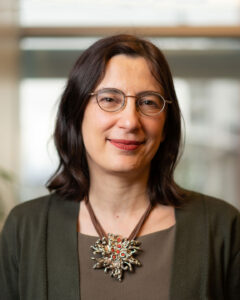National Science Foundation
The National Science Foundation has announced a 2-to-4-year appointment of Denise Dearing as Director for the Division of Integrative Organismal Systems.
The Division of Integrative Organismal Systems (IOS) is one of four divisions within the Directorate of Biological Sciences at the NSF. The Division Director provides vision and leadership, and contributes to NSF’s mission by supporting fundamental research to advancing our understanding of organisms as integrated units of biological organization. The Division Director also provides guidance to program officers and administrative and support staff, and assesses needs and trends, develops breakthrough opportunities, implements overall strategic planning, and policy setting.
Both the NSF and the UU are supportive of Denise continuing to participate in her on-going research program and provide mechanisms and resources to enable the research in her group to continue and advance during her time at the NSF.
Dearing is Distinguished Professor in Biology at the University of Utah and a two-term former chair of the department which was made a School in 2018 after which she became director. The research in the Dearing lab focuses on understanding how small mammals overcome challenges related to diet and disease. “Our work draws on approaches from many disciplines (e.g., physiology, ecology, pharmacology, genetics, biochemistry, ethology) and combines field and laboratory studies,” says Dearing whose research website features three current projects: Understanding the genetic underpinnings that enable ingestion of poisonous diets; Investigating the role of gut microbes in facilitating the ingestion of dietary toxins; and Rules of Resilience: Modeling impacts of host-microbe interactions during perturbations.
Dearing earned her B.S. in Biology from Eastern Connecticut State University, 1985 an M.S. in Biology from the University of Vermont in 1988, and a Ph.D. in Biology from the University of Utah in 1995. She served as Associate Dean, College of Science between 2012 and 2014.
Among her awards and honors are the 2018 Joseph Grinnell Award (American Society of Mammalogist); the 2014 C. Hart Merriam Award (American Society of Mammalogists); a 2008 Graduate Student and Postdoctoral Scholar Distinguished Mentor Award; and a 2008 Distinguished University Teaching Award (University of Utah).
by David Pace, first published @biology.utah.edu










